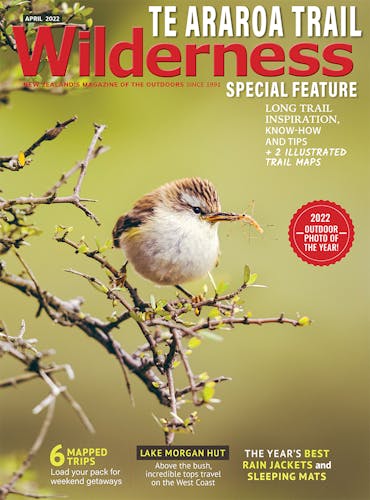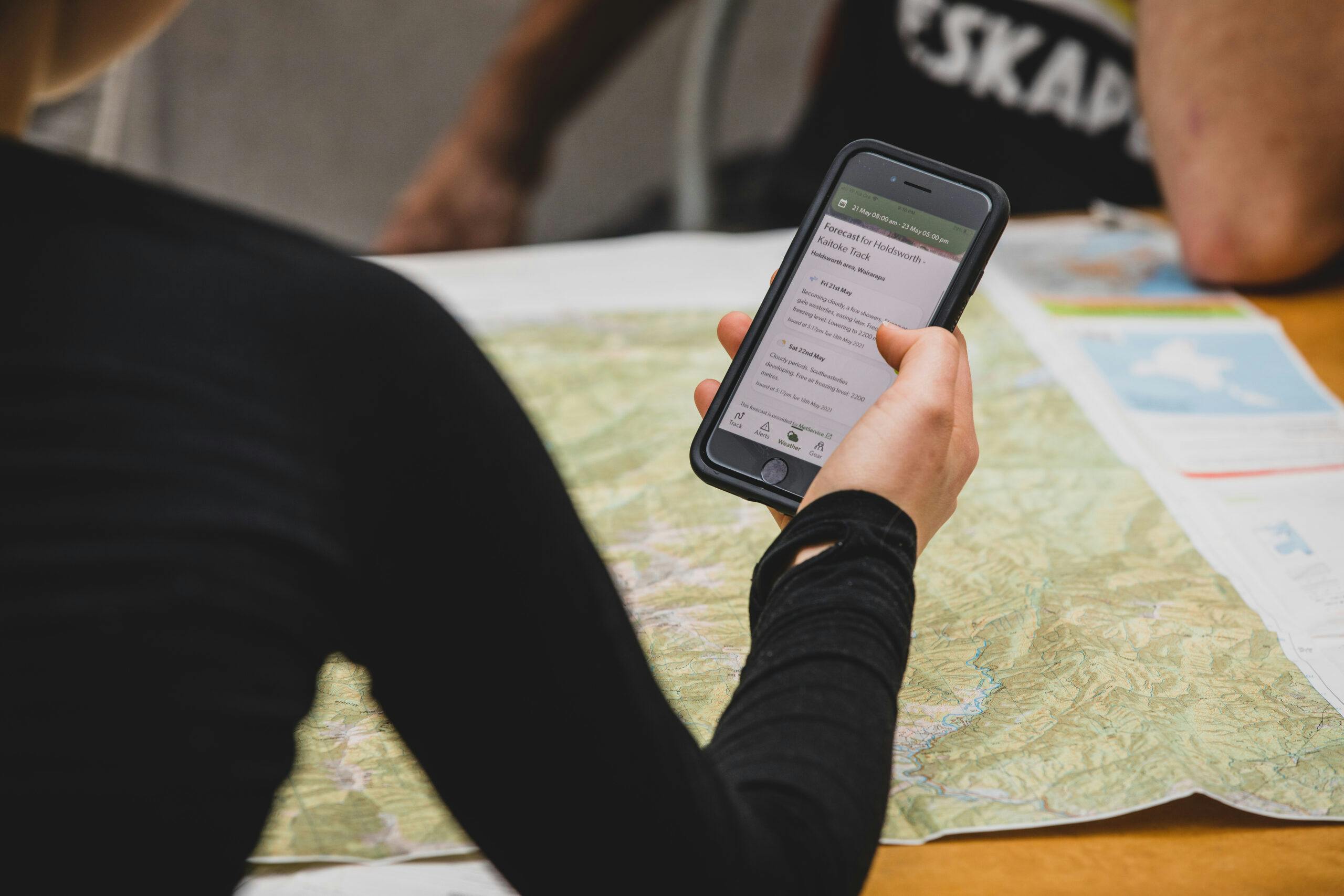Before heading out, you should check the weather forecast. But what do you do with the information you learn?
Here are some things you need to consider before continuing with your trip based on recent weather and the forecast for during and after the trip.
Before the trip
How has recent weather affected the area where you’re planning on tramping?
Slips and mud: If there has been recent heavy rain there may be slips. This is particularly important if you intend crossing known slips or to go along narrow cliffside tracks. Slips may mean you have to turn back, change your route, or camp instead of reaching a hut. If you are able to cross a slip face or go around it, consider if all your group will be up to doing so. If returning the same way, will you still be able to go across or go around it? Could there be more slips further along? The track may be very muddy and unpleasant or slippery.
Rivers: Recent heavy rain may make unbridged rivers or side streams uncrossable. Waterways with steep and rocky catchments tend to rise and fall fast. However, if most of the catchment is covered in bush, the soil acts as a sponge taking up the water before spilling it into waterways. If the soil sponge is dry, there will be a delay before the rivers rise. It will also take longer for the water levels to drop.
If water levels are likely to be up, consider a route with no major unbridged rivers or side streams.
Wind: From where is the wind coming? Is your route sheltered from or exposed to this wind? High winds before your trip could have caused trees or branches to fall onto the track. Check the track conditions with DOC before leaving or use the Plan My Walk app to receive weather-related alerts that may affect your plans.
Snow: If snow has fallen, will it have melted? Does your group have the skills to safely negotiate snow? The snowmelt may affect rivers and streams it feeds into, especially in the morning. Is there an avalanche risk?
Timing: If bad weather doesn’t arrive as forecast, it may mean the weather has been delayed and is yet to come. Be prepared for this, and for any bad weather to continue for longer than is forecast.
During the trip
Bad weather during the trip may be uncomfortable. You may prefer to cancel and do the trip in more favourable weather. As mentioned, slips, mud, raised rivers, windfall and snow may affect your plans.
Weather direction: What may be a significant issue on one side of a mountain range may hardly affect the other side. What is the wind direction? Is it blowing directly on the side where you’re tramping, or are you on the lee of the range? The wind direction will affect which side of the range the rain will fall and which rivers will be less affected on the lee side.
Cold, wet and windy: Combine two or all three of these conditions and you’re at risk of hypothermia. Do you know how to recognise the early signs of hypothermia and how to manage it? If the trip involves travel in exposed terrain, these conditions are particularly dangerous. To continue in these conditions, you will need sufficiently warm clothes, shelter and skills. Strong wind in exposed terrain, and especially gusty wind, could blow you over.
Low cloud: Clouds can descend onto the tops, reducing visibility so you can’t see the next track marker or even the track. Such conditions require excellent navigation skills.
After the trip
Don’t forget to consider the weather forecast for after the trip is meant to be completed. Weather forecast to arrive after the trip, may hit early. You could get stuck behind rising rivers or in a hut waiting for the weather to abate. You may be delayed for some other reason. Knowing the upcoming forecast will help you decide whether to take a day longer or to walk faster to make it out before bad weather hits.
– Heather Grady is an instructor with Outdoor Training New Zealand








